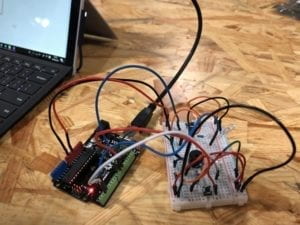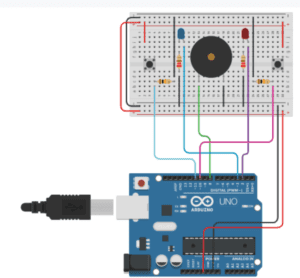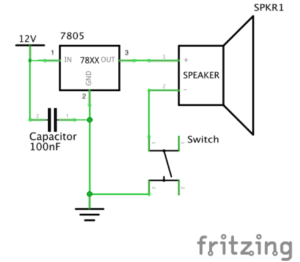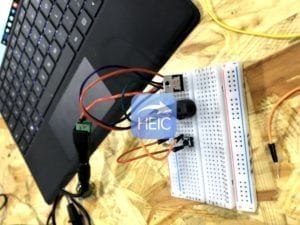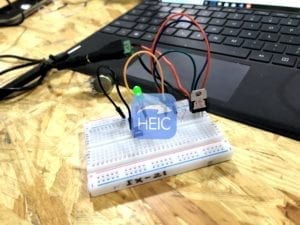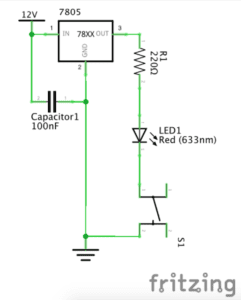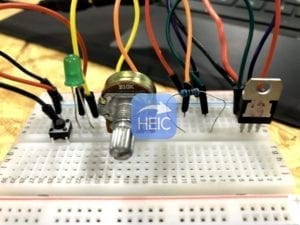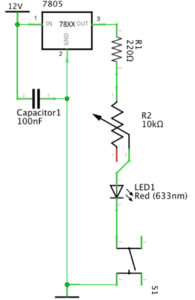This is our Fade circuit
This is our tone melody circuit.
This is our speed game
This speed game circuit would be the most complicated circuit we had built since taking Inter lab. It requires well understanding of how Arduino works, including the Analog In part and the connections between different components. We spent some time to understand how the circuit worked and it took a while, however, we succeeded at last. Generally I would say, right now the hardest part for us to understand is how to connect the Analog part into the circuit. We still need time to get used to it.
The answers to the two questions:
Question 1: As it’s mentioned in the text Physical Computing, the interaction between computer and users need to be achieved through three parts: Input, Processing and Output. This is very true, since human users and computers don’t share the same kind of language, we need our actions and commands to be understood by computers and thus achieving the goals of interactions. In nowadays cases, Input can be sensors which for example capturing the movements of the users, keyboard itself is also a way of inputting information into computers. The processing part is done by the CPU of a computer, which plays the same roles as human’s brains. Output can be compicated, it can be a line of letters showing on the screen, or it can be sound or illustratiions produced by the computer after processed. To conclude, interaction means the communications or the ‘iterative process of listening, speaking and thinking between two or more actors’.
Question 2: I would make a giant screen, and there will be a touching pad for visitors to interact with it. Any people that put their hands on the pad, their will be a heart popping from the screen, the heart doesn’t necessarily means happy, it can be any emotions people want to express. I want to place this device at the civic square of my hometown, Shenzhen, and the name of it would be Heart of Our City, it represents everyone living in this young city, and it’s pulsing everyday, with passion and love for every people and every day.
